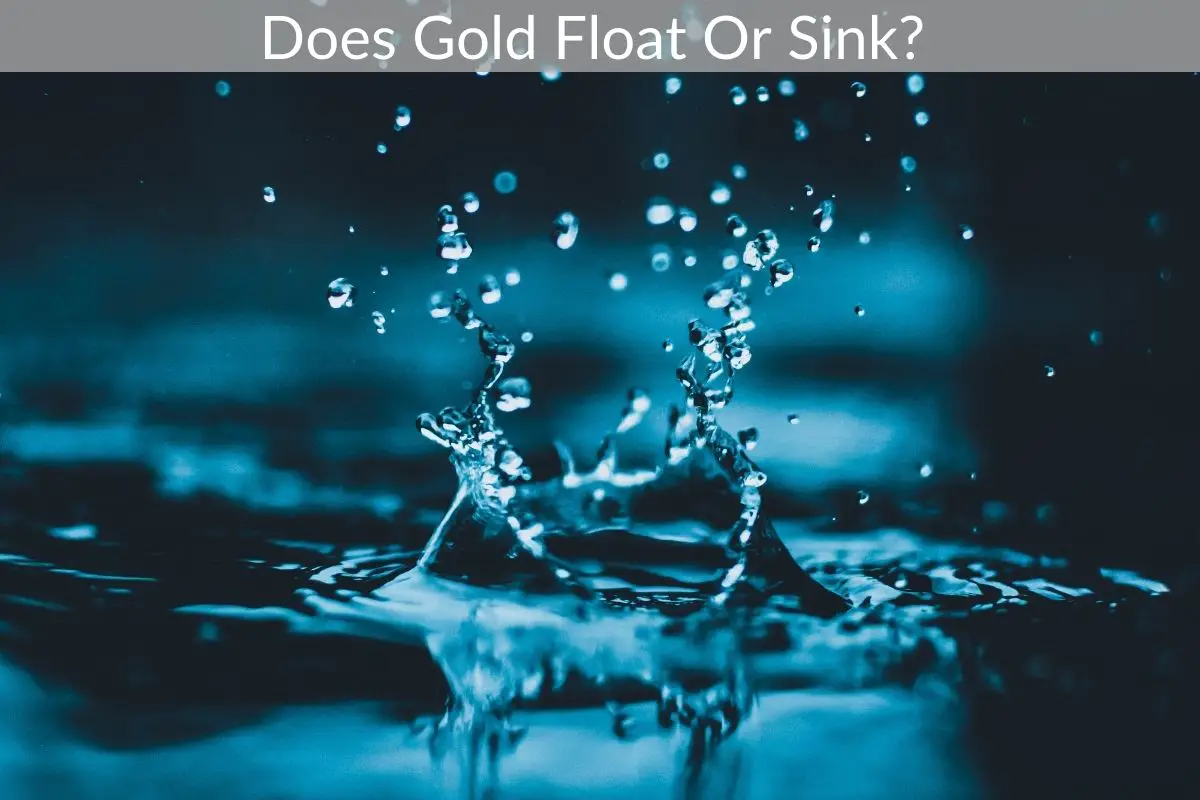Table of Contents
Gold is classified as heavy metal. But does gold float or sink in water? Gold will sink to the bottom when placed in a water container. Gold sinking to the bottom is one of the ways you can determine that the gold is genuine and not some cheap imitation.
*This post may contain affiliate links. As an Amazon Associate we earn from qualifying purchases.
Gold is a precious metal, and thus, you would want to know ways to tell if it’s real. One of the most significant ways of knowing if gold is real is by dropping it in water. If the gold is real, it will sink to the bottom of the container. However, this isn’t a foolproof method since many other metals can also float to the bottom of the container if you place them in water.
To see some gold test kits that you can get to test your gold to know if it’s real or not just click here.
What Are Some Methods of Knowing That the Gold Is Real?
Gold is one of the most precious metals you can buy. When you’re buying gold, you are likely paying a lot of money for it. So, you want to ensure the gold products you’re buying are genuine. To do this, you have to look out for specific characteristics that will help you understand whether or not the gold is real.
1. Look For a Hallmark or Signage
The best way to know if the gold you’re purchasing is real is to look for a hallmark. Most jewelry comes with a small stamp of its karat weight. You will see different values depending on the country you’re in. US stores generally mention a fraction, so if you purchase 12K gold, you will see ½ on the inner part of the ring. However, in Europe, they follow a decimal system.
If the gold you’re buying doesn’t have this signage, it’s something you have to look out for. However, you shouldn’t worry too much as the gold can just be old. The signage may have faded away due to wear, or it may not be present because the gold is from before signage became a common practice.
2. Look For a Letter Mark
Most gold has a hallmark as well as a letter mark. You should check if the gold piece has the letters GP, GF or GEP stamped on the gold. If it does, the gold might not be real. GP stands for gold-plated, GF stands for gold-filled, and GEP stands for Gold Electroplated. While the gold-plating may be real gold, the gold composition is not enough for the product to be considered a gold product.
3. Use Nitric Acid
You can also test real gold using nitric acid. You should look at the jewelry and find a point where you can scratch the metal a little. It would be best to make the scratch deep enough to surpass the first layer of gold. When you see that you’ve managed to do that, cautiously add a drop of nitric acid on top of that mark. If the mark turns green or milky, the gold is not real. Real gold will not react to nitric acid. While conducting this test, you have to ensure that you protect yourselves using gloves and protective eyewear.
4. Calculate the Item’s Density
You can do so in the following way. We know that the actual density of gold is 19.3 g/mL. So, it would help if you had a mass balance to find out the mass. You’ll keep the item on the mass balance and list down the mass. Then, you’ll get yourself a measuring cylinder that can hold the item and find the volume by noting the change in the volume reading before and after adding the item to the measuring cylinder with water once you know the mass in grams and the volume in milliliters. You can use the formula for density, i.e., mass/volume, to find the item’s density. If the density is close to 19.3, the item will be gold. If not, then it’s not.
5. Use a Ceramic Tile
You can buy a ceramic tile that is not glazed. Using the ceramic tile, you will scrape at the item until you see some gold flaking off. If the streak is gold, the article is real gold. If the streak is black, the presence of real gold is unlikely.
6. Use a Strong Magnet
Even though real gold is a heavy metal, it is not magnetic. To test this theory, buy a powerful magnet from a hardware store. Kitchen magnets are super weak and will not be able to help you. If the item has iron or stainless steel, it will get attracted to the magnet, and if it doesn’t, it’s likely to be real gold.
7. Rub the Item Against Your Skin
Take the item in your hands and let it be for a little while, then rub the item against your skin. If it leaves a green streak or a line, the item doesn’t have gold. If it doesn’t, chances are it has gold.
You can also use makeup to check for the authenticity of gold. Apply some liquid foundation on the back of your hand and apply powder on top of it. Once the makeup has dried, rub the piece of jewelry on your hand and then run it lightly over your skin where you have the makeup. If the item leaves a black trace, the gold is more likely to be real.
8. Vinegar Test
Apply vinegar to the item. If it changes color, the item is fake, and if it doesn’t, the item is made of real gold.
All of these methods are good. However, the only way you can know that the gold is real for sure is by having it checked by a professional. So, you will have to take it to a gold salesperson so they can inform you about whether or not the gold is real.
Final Thoughts
You can apply many tests to check if a piece of jewelry is real gold or not. One of these ways is placing gold in a container of water. If the piece sinks, it is more likely to be made of real gold. Knowing different tests will allow you to know what to look out for before buying a piece.
Thus, it prevents you from getting conned. It would help if you always bought your pieces from reputable places to have fewer chances of facing a loss.



